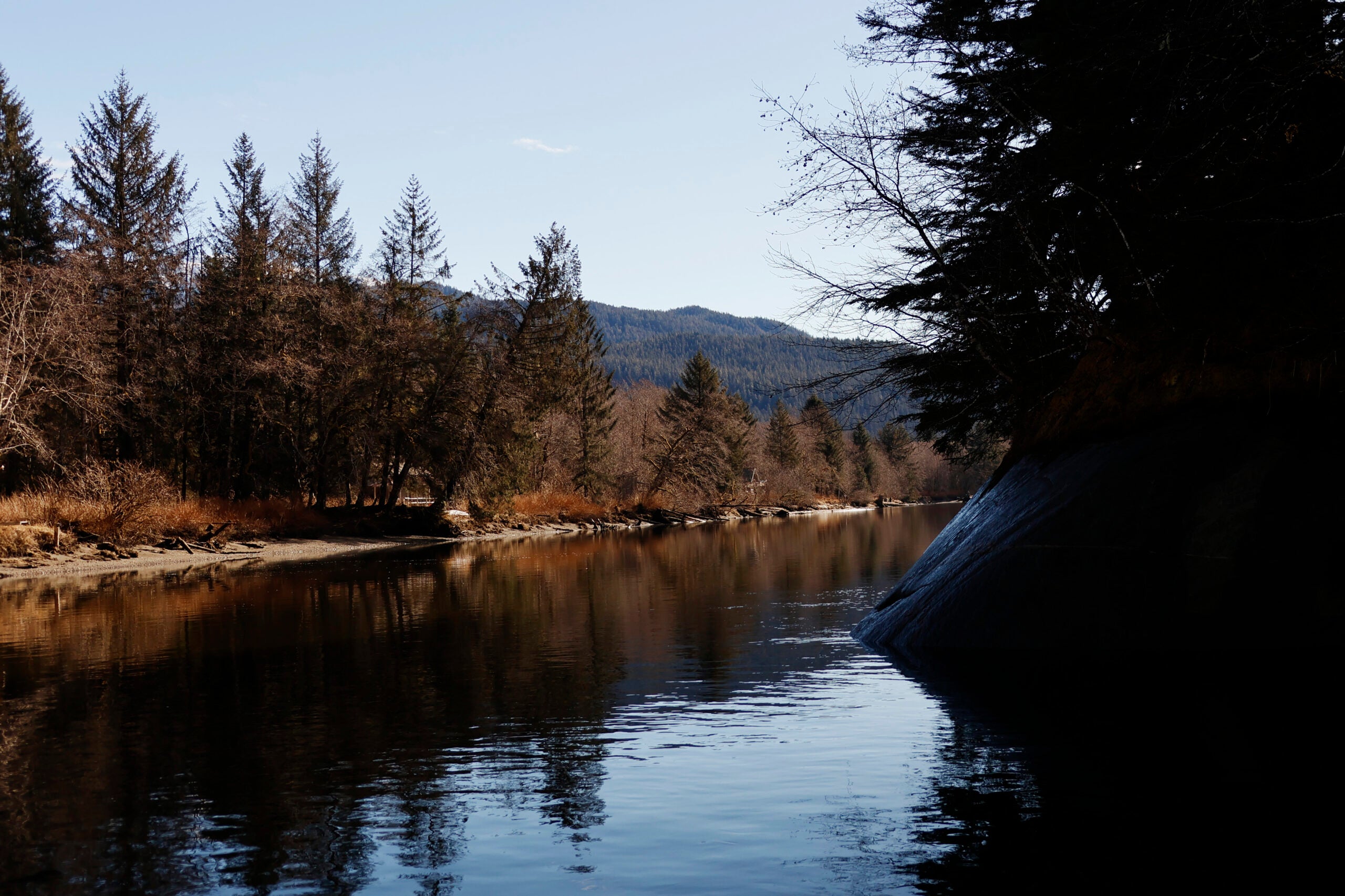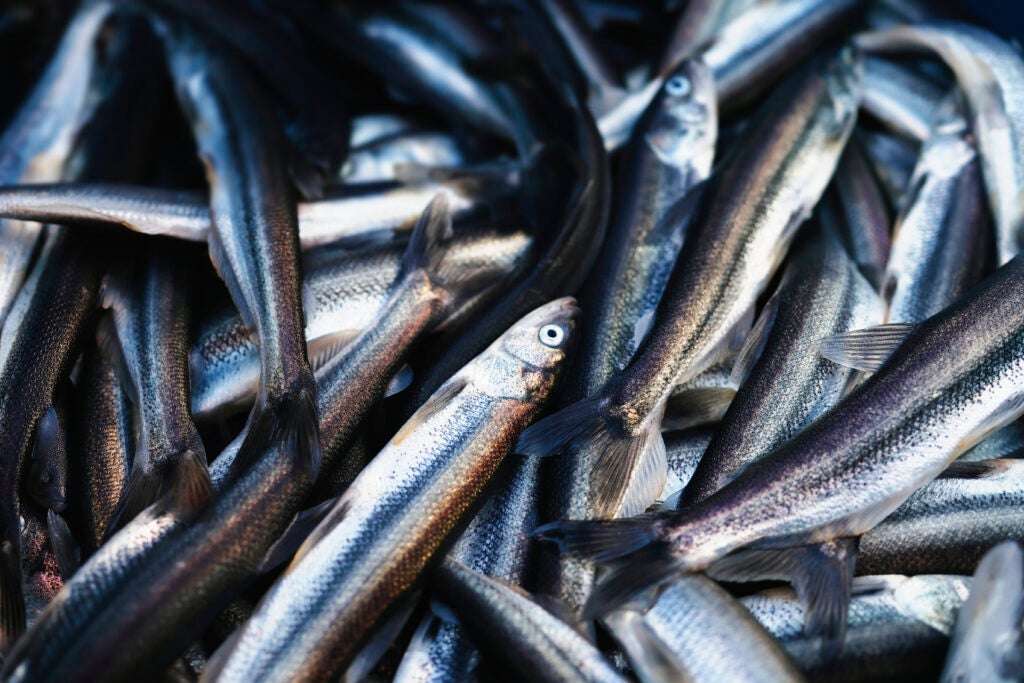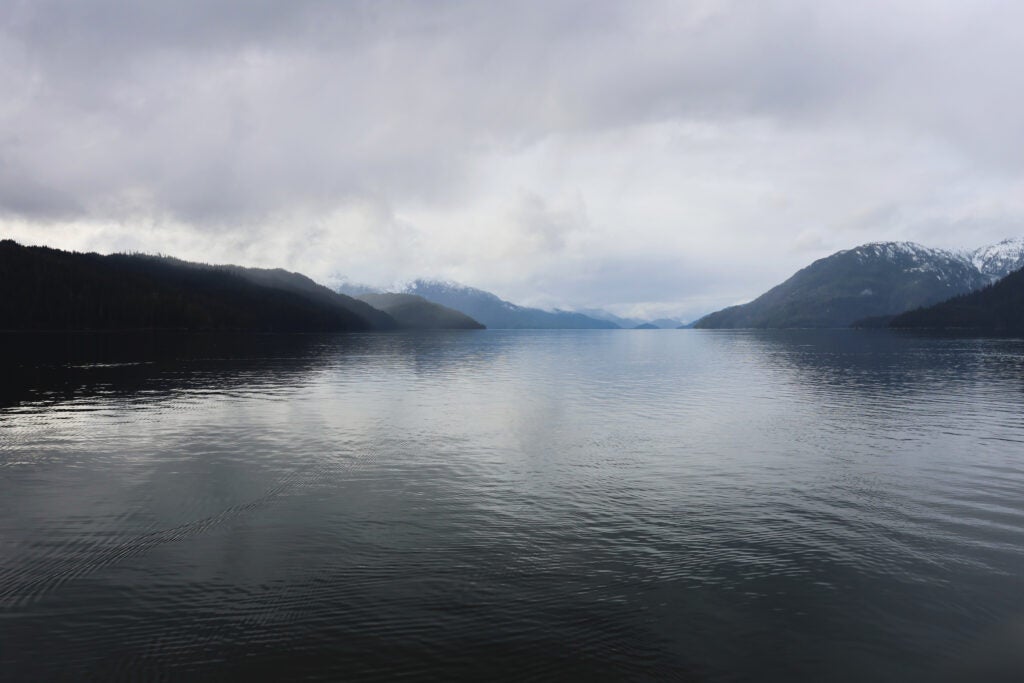Spring on Alaska’s Unuk River Represents a Fight for Our Way of Life
Mining pollution threatens the sovereign rights of the Tsimshian in Southeast Alaska. Assistant Executive Director of the Southeast Alaska Indigenous Transboundary Commission Lee Wagner tells what that means for her community.

This page was published a year ago. Find the latest on Earthjustice’s work.
This article was originally published at High Country News and is republished by permission.
In Southeast Alaska, the arrival of spring is marked by the return of the ooligan (eulachon) in the Unuk River. Ooligan, sm’algyax, is the “fish that saves.” It forms the basis for an entire regional ecosystem, and is why our people have thrived here since time immemorial. This river flows through our history of origin and migration, its place names reflecting our ancestors and events critical to our history. For over 10,000 years, my family has upheld the sacred duty of stewarding the Unuk.
Decades ago, the Unuk was glacier blue. I remember ooligan coming in, their fluid, silvery forms filling the river. It seemed as if you could have crossed the water upon their backs. In the 1990s, mining operations began in the headwaters across the U.S.-Canada border, and ooligan began to slowly diminish. By 2001, only one fish was observed in the river, and Alaska Fish & Game closed the fishery. This was a devastating blow to our community.

Ooligan, caught on the Unuk River in Alaska. (Sonia Luokkala / SEITC)
Following the closure of the old Eskay Creek mine in 2008, the fish started to slowly return, but they haven’t recovered to their previous levels. This spring, all three generations of my family went up the river to harvest ooligan. We have no say in how the river is managed, but we are allowed to harvest in non-customary and non-traditional ways. The water was dark. My father, Louie Wagner, Jr. who has fished here for more than 60 years, said that he had never before seen the river this color. Although we couldn’t see past an inch, we could smell the ooligan coming in, their distinct sweet smell filling the air. Had the water been clear as it once was, ooligan’s arrival would have completely changed the river, looking like huge, shining flocks of migratory birds beneath the surface.
We managed to cast enough to bring home a few buckets. Although it isn’t a lot, it’s deeply meaningful. My father said that it felt like the end of a long drought. As long as the ooligan keeps coming in, we know that the river is healthy.

Louie Wagner Jr. casts for ooligan on the Unuk River, as his family has for generations. (Sonia Luokkala / SEITC)
Now, Skeena Resources aims to re-open the old Eskay Creek Mine as a large open-pit operation. It is just one of dozens of developing and operational mines dotting the headwaters of the Unuk, Stikine and Taku Rivers. If we allow this region to be transformed into a mining district, my concern is that this will become a place where the stream stops forever.
No amount of money can compensate for the loss of our rivers.
Ten years ago, 15 Southeast Alaska Tribes formed a SEITC, a commission set to protect our life-giving transboundary rivers from the increasing threat of Canadian mining. Implementation of the United Nations Declaration on the Rights of Indigenous Peoples (DRIPA), ratified by Canada in June of 2021, requires Canada to recognize the rights of the Southeast Tribes and their interests in territories that pre-date the U.S.-Canadian border. We are working closely with Earthjustice to assert our rights under DRIPA and Canada’s constitution, and we are making progress.

The Behm Canal, en route to the Unuk River. (Sonia Luokkala / SEITC)
On Jan. 30, we submitted evidence to British Columbia’s Environmental Assessment Office (BCEAO), for the thorough review of all potential health, environmental, social, economic and heritage effects of proposed mines.
Skeena Resources will submit its environmental assessment to the BCEAO by the end of June. Receiving the environmental assessment certificate is a formal approval for the project to proceed, confirming that it meets environmental and regulatory standards. Concurrently, there will be an opportunity for the public to comment.
If the project goes forward, our voices and knowledge would effectively be silenced and erased. Like all governments, Canada has a responsibility to guarantee the ability of everyone to enjoy their internationally recognized human rights — this includes preventing private parties within its control from taking actions that violate those rights.
While waiting for Canada’s response, we ask that our sovereign rights as the original stewards of these rivers and watersheds are respected. By honoring the lessons passed down by our foremothers and drawing strength from our ancestors, we can stand up against the forces that have taken so much from us.
As we challenge one of the most powerful industries in the world, we choose true prosperity for both current and future generations.
We fight to ensure our tribal and Indigenous clients’ natural and cultural resources are protected for future generations.